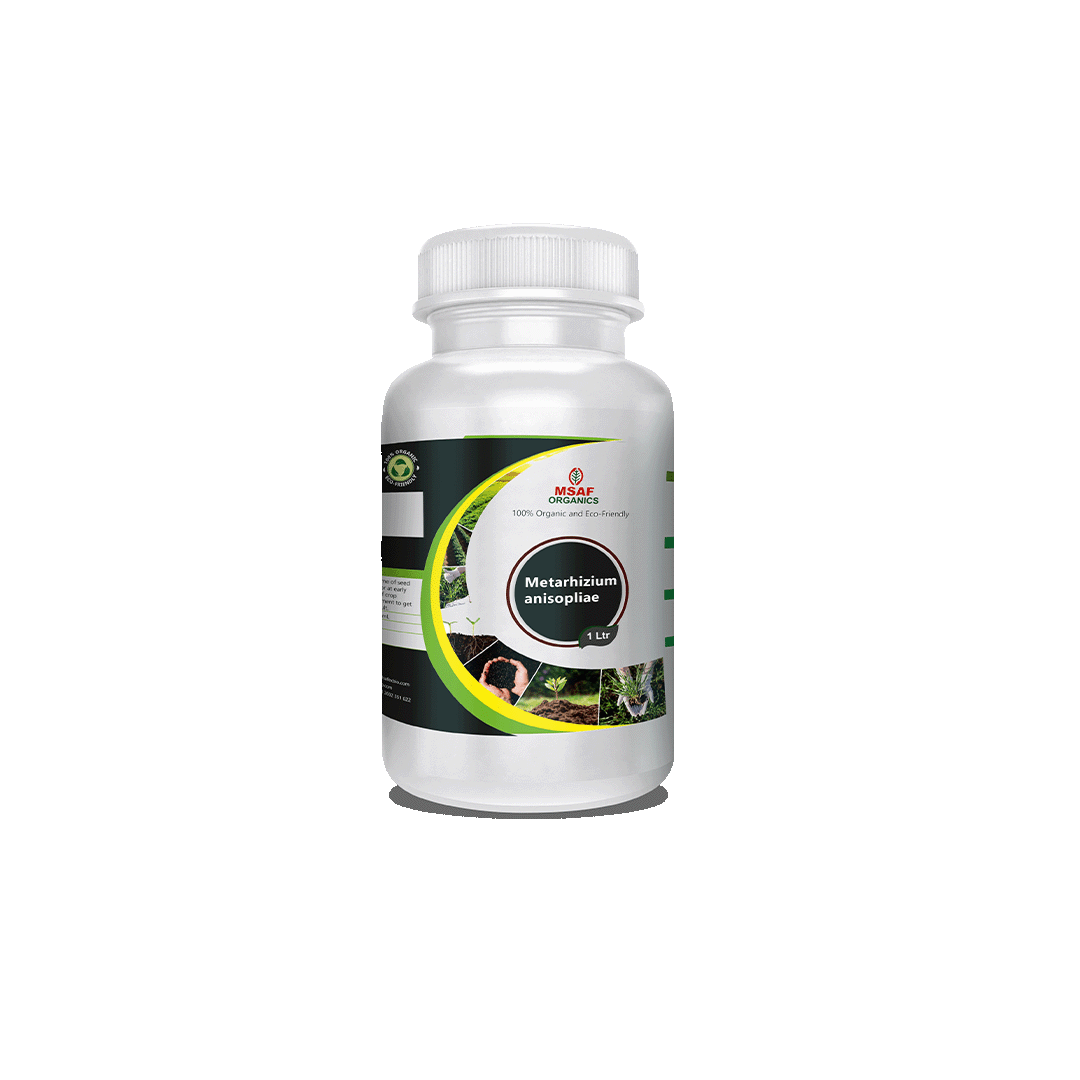METARHIZIUM ANISOPLIAE

Product Description:
Metarhizium anisopliae is a naturally occurring fungus that has been widely used in agriculture as a biological control agent against various pests. It is especially effective against insect pests such as beetles, flies, and grasshoppers.
This fungus works by infecting the target pest through contact and ingestion. Once the spores of Metarhizium anisopliae come into contact with the pest, they germinate and penetrate the insect's cuticle, subsequently colonizing its body. This colonization leads to the eventual death of the pest due to fungal growth within its tissues.
Metarhizium anisopliae offers an environmentally friendly alternative to chemical pesticides, making it suitable for use in organic farming systems. It is safe for beneficial insects, humans, and other non-target organisms, making it an ideal choice for integrated pest management strategies.
How to Use in Farming:
Preparation: Ensure that the Metarhizium anisopliae product is stored according to manufacturer instructions, typically in a cool, dry place away from direct sunlight. Follow all safety precautions provided on the product label.
Application Timing: Apply Metarhizium anisopliae when pest populations are actively present and conditions are favorable for fungal activity. Early morning or late afternoon applications are often recommended to avoid high temperatures and UV radiation.
Application Method: Metarhizium anisopliae can be applied using various methods, including spraying, dusting, or soil incorporation, depending on the target pest and farming practices. Follow the recommended application rate provided by the manufacturer.
Target Pest: Identify the target pest species and their lifecycle stages to determine the most effective timing and method of application. Metarhizium anisopliae is particularly effective against soil-dwelling pests such as beetles, grubs, and larvae.
Coverage: Ensure thorough coverage of the target area or crop foliage to maximize contact between the fungal spores and the pests. Pay attention to application uniformity and adjust equipment settings as needed.
Environmental Conditions: Consider environmental factors such as temperature, humidity, and rainfall when planning Metarhizium anisopliae applications. Favorable conditions for fungal growth and insect activity will enhance the effectiveness of the biocontrol agent.
Monitoring and Evaluation: Regularly monitor pest populations and assess the efficacy of Metarhizium anisopliae treatments. Adjust application timing and frequency as needed based on pest pressure and crop development.
Integration with other Management Practices: Incorporate Metarhizium anisopliae into an integrated pest management (IPM) program that includes cultural, biological, and chemical control strategies for comprehensive pest management while minimizing environmental impact.


